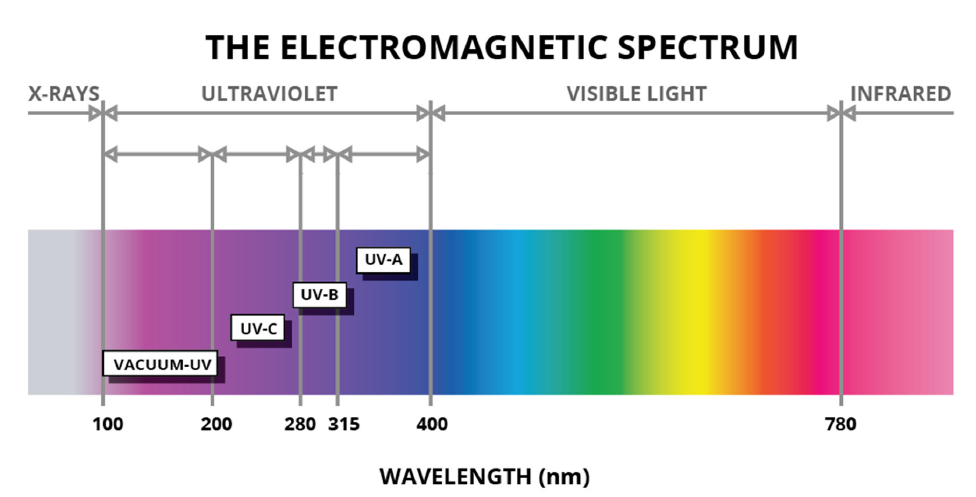The following tips and products are highly recommended for students, athletes
You can read about the first four tips (CILTEP, B Vitamins, Choline, and PQQ) in the article Tips to Improve Concentration, Memory, and Creativity: Part 1. Tips 5 to 8 (Theanine, Magnesium, Iodine, Phenibut) are reviewed in the article Tips to Improve Concentration, Memory, and Creativity: Part 2. Tips 6 to 12 (Binaural beats, Meditation, Zinc, Phosphatidylserine) are covered in the article Tips to Improve Concentration, Memory, and Creativity: Part 3. You can read about tips 13 to 16 (Glutathione, Activated Charcoal, Spirulina
Tip 21: Curcumin
Curcumin is one of the main anti-aging products for the brains. In India, where curcumin is consumed in large amounts, Alzheimer's disease is four times less prevalent than in the United States [1]. In the Western world, a large Alzheimer's epidemic is afoot, as it is predicted the number of people with Alzheimer's disease will double over the next decades [2]. Researchers have also concluded that Alzheimer's, in a way, can be considered equivalent to type-3 diabetes [3]. Thankfully, many followers of the Bulletproof lifestyle keep their blood sugar levels under control. Curcumin can be an additional way to keep your brains healthy at a later age. It does not only offer advantages for later in life, but it can also help you now to achieve better mental performance.
Curcumin increases DHA levels in the brains. We have seen DHA in tip 18. They also reinforce each other's effects. More DHA in the brains means a better memory and a more relaxed state of concentration [4].
Curcumin also improves memory and mood in older people [5]. Whether this applies to younger adults as well has not been investigated yet. It has been found that curcumin has a general anti-depressing effect. That is because it reaches both the dopamine and serotonin receptors in the brains [6]. Enhanced dopamine and serotonin levels are indirectly connected to improved learning ability, concentration, and memory, as we have seen in the previous tips.
Here at Helfi, we would advise to take
Recommended dosage: 1 capsule Natural Stacks Curcumin per day. It is best to combine this capsule with a meal that contains fish or with a fish oil capsule such as Krill oil or EPA/DHA.
Tip 22: Nicotine gum or patches
Because of its potentially addictive effect nicotine has a bad reputation. This tip, therefore, is to a certain extent controversial.
At this point in
Contrary to popular belief, nicotine is not a stimulant. In fact, nicotine reduces anxiety, in contrast to caffeine, for example [7]. Just look at the relaxation on a smoker's face when they take a drag of a cigarette. Nicotine also enhances memory function. It is easier to recall information that is stored in short-term and long-term memory.
In one study, one group received a nicotine patch of 15mg, while the control group received a placebo patch without any nicotine [7]. The groups were monitored for six months. The nicotine group had an improved attention span, memory and speed of mental processes compared to the placebo group. No (dangerous) side effects were found.
Nicotine is a unique product because it works as a relaxant whilst simultaneously enhancing a multitude of areas of mental performance. It is because of the relaxing effect that it is a good choice for an important presentation, for example.
Recommended dosage: one nicotine patch at the start of a workday. You could also use nicotine gum. This is completely at your own risk. We would never advise anyone to start smoking to get nicotine.
Tip 23: UV light
Our main source of UV light is sunlight. UV light follows the same curve as physical exercise. Too little exposure to the sun is not good - but neither is too much. Humans mostly receive UV light through their eyes and skin. Some nutrients and melanin in the (brown) skin help the body to absorb more UV light better [8]. The main nutrients that help make good use of UV light are DHA, cholesterol, and
The sun gives off three different "types" of light: UV light, the visible light and all the

Figure 1: The light spectrum
As discussed in the meditation tip, it is important to increase concentration in a relaxed state of mind as much possible. Enhancing concentration by consuming a large amount of caffeine, for example, will probably work adversely because anxiety might overrule and creativity will be repressed. UV light can help you to achieve that state of relaxed concentration because it boosts your mood [9].
When UVA light reaches the eyes, it has several biological effects. UVA light raises the serotonin level in the brains. That is why UVA light is one of the reasons why you feel so good on a sunny day on the beach. UVA light also raises the endorphin levels, which is the same substance that creates the "runners high" [10]. UVA light also helps create melatonin, which helps you sleep at night. Improved sleep means an increased capacity to perform mentally at a high level the following day. Finally, UVA has a motivating effect, because it increases the dopamine level in the brains [11]. You need UVA light to
For anyone afraid of skin cancer as a result of UV (UVA + UVB) light, I have good news. The closer to the equator, the more UV light is present, and the less cancer is prevalent [12]. There are also less autoimmune diseases around the equator, as autoimmune diseases have a negative correlation with exposure to UV light. So the more UV light you get via the sun, the lower the chance of autoimmune diseases. The greatest danger of UV light is too much exposure while there are insufficient nutrients or tolerance to make use of the UV light.
Everyone needs a balanced amount of UVA and UVB. In the Netherlands, UVB light is only present in spring and summer. If you're indoors all day long, you have even less chance of getting enough UVB light to perform optimally. Windows decrease the amount of UVA light that is filtered
In principle, the sun has a positive effect on your health. It does not follow that you should sit for hours on end in the sun if you are used to spending your days in an office. If you have adjusted to an indoor environment with almost no UV light, your skin will not have built up any protection to the sun. It is advisable to make contact with the sun all year long. I have built up a tolerance to cold, so I can sit in the sun all year round without negative consequences. See below a picture in which I am studying outside in a relaxed state of mind, a few degrees (Celsius) below zero.

So even in the Netherlands, it is possible to make use of the sun all year round. However, most people will find it too cold in winter to sit out in their bathing suits. If you do not or cannot expose yourself to the sun during winter, you could still go outside with more clothes on. The UV light will still enter through your eyes and have some beneficial effects. Limited exposure to the sun is always better than no exposure at all!
If your diet is in order, with a large amount of DHA,
It is important not to wash your skin for a couple of hours after UV light exposure because UVB light is located in the top
There are two other ways of getting UV light. You could install reptile lighting in your home or office, or you could use a sunbed. I would only advise either of these options if you have done your own research into it. The effect of either method can be very strong, severely increasing the chance of sunburn or overexposure. In this article, we stick to sunlight because, at present, there is no artificial light that could replace the sun.
From all the
Recommended usage: try to catch UV light all year round. You can use sunlight, a reptile lamp or a sunbed.
Tip 24: DMAE
DMAE is a cheap nootropic related to choline, which was discussed in tip three. DMAE is a precursor of choline. This means that choline can be made in the brains
DMAE increases learning ability and memory. This is because it affects the acetylcholine neurotransmitters in the brains, just like choline [15]. DMAE also has an anti-aging effect because it counteracts the effects of free radicals in the brains. Like choline, DMAE has a light stimulating effect, and it is, therefore, best to take in the morning. In contrast to caffeine, however, it does not suppress melatonin, so if you take it in the evening, it does not necessarily have an adverse effect on the quality of sleep.
Also, DMAE improves the mood [16]. Having said that, it is important to experiment with the right dosage, as too high a dose can cause side effects [17].
Recommended dosage: a standard dose contains approximately 250mg DMAE. I would recommend starting with
Sources
[1] Ng TP, Chiam PC, Lee T, Chua HC, Lim L, Kua EH. Curry consumption and cognitive function in the elderly. Am J Epidemiol. 2006 Nov 1;164(9):898-906. Epub 2006 Jul 26.
[2] http://www.dailymail.co.uk/health/article-3387568/The-world-brink-Alzheimer-s-epidemic-2050-106-MILLION-people-battling-debilitating-condition-expert-warns.htmlt
[3] J Diabetes Sci Technol. 2008 Nov;2(6):1101-13. Alzheimer's disease is type 3 diabetes-evidence reviewed. De la Monte SM1, Wands JR.
[4] Wu A, Noble EE, Tyagi E, Ying Z, Zhuang Y, Gomez-Pinilla F. Curcumin boosts DHA in the brain: Implications for the prevention of anxiety disorders. Biochim Biophys Acta. 2015 May;1852(5):951-61. doi: 10.1016/j.bbadis.2014.12.005. Epub 2014 Dec 27.
[5] Cox KH, Pipingas A, Scholey AB. Investigation of the effects of solid lipid curcumin on cognition and mood in a healthy older population. J Psychopharmacol. 2015 May;29(5):642-51. doi: 10.1177/0269881114552744. Epub 2014 Oct 2.
[6] Kulkarni SK, Bhutani MK, Bishnoi M. Antidepressant activity of curcumin: involvement of serotonin and dopamine system. Psychopharmacology (Berl). 2008 Dec;201(3):435-42. doi: 10.1007/s00213-008-1300-y. Epub 2008 Sep 3.
[7] Gold M, Newhouse PA, Howard D, Kryscio RJ. Nicotine treatment of mild cognitive impairment: a 6-month double-blind pilot clinical trial. Neurology. 2012 Jun 5;78(23):1895; author reply 1895. doi: 10.1212/WNL.0b013e31825a45ec.
[8] Brenner M1, Hearing VJ. The protective role of melanin against UV damage in human skin. Photochem Photobiol. 2008 May-Jun;84(3):539-49. doi: 10.1111/j.1751-1097.2007.00226.x.
[9] Gambichler T1, Bader A, Vojvodic M, Bechara FG, Sauermann K, Altmeyer P, Hoffmann K.Impact of UVA exposure on psychological parameters and circulating serotonin and melatonin. BMC Dermatol. 2002 Apr 12;2:6.
[10] Levins PC, Carr DB, Fisher JE, Momtaz K, Parrish JA. Plasma beta-endorphin and beta-lipoprotein response to ultraviolet radiation. Lancet. 1983 Jul 16;2(8342):166.
[11] Flores KG, Erdei E, Luo L, White KA, Leng S, Berwick M, Lazovich D. A pilot study of genetic variants in dopamine regulators with indoor tanning and melanoma. Exp Dermatol. 2013 Sep;22(9):576-81. doi: 10.1111/exd.12200.
[12] http://bigthink.com/devil-in-the-data/vitamin-d-sun-and-cancer
[13] Luxwolda MF, Kuipers RS, Kema IP, Dijck-Brouwer DA, Muskiet FA. Traditionally living populations in East Africa have a mean serum 25-hydroxyvitamin D concentration of 115 nmol/l. Br J Nutr. 2012 Nov 14;108(9):1557-61. doi: 10.1017/S0007114511007161. Epub 2012 Jan 23.
[14] Norval M, Wulf HC. Does chronic sunscreen use reduce vitamin D production to insufficient levels? Br J Dermatol. 2009 Oct;161(4):732-6. doi: 10.1111/j.1365-2133.2009.09332.x. Epub 2009 Jun 4.
[15] Malanga G, Aguiar MB, Martinez HD, Puntarulo S. New insights on dimethylaminoethanol (DMAE) features as a free radical scavenger. Drug Metab Lett. 2012 Mar;6(1):54-9.
[16] Dimpfel W, Wedekind W, Keplinger I. Efficacy of dimethylaminoethanol (DMAE) containing vitamin-mineral drug combination on EEG patterns in the presence of different emotional states. Eur J Med Res. 2003 May 30;8(5):183-91.
[17] Fisman M, Mersky H, Helmes E. Double-blind trial of 2-dimethylaminoethanol in Alzheimer's disease. Am J Psychiatry. 1981 Jul;138(7):970-2.











